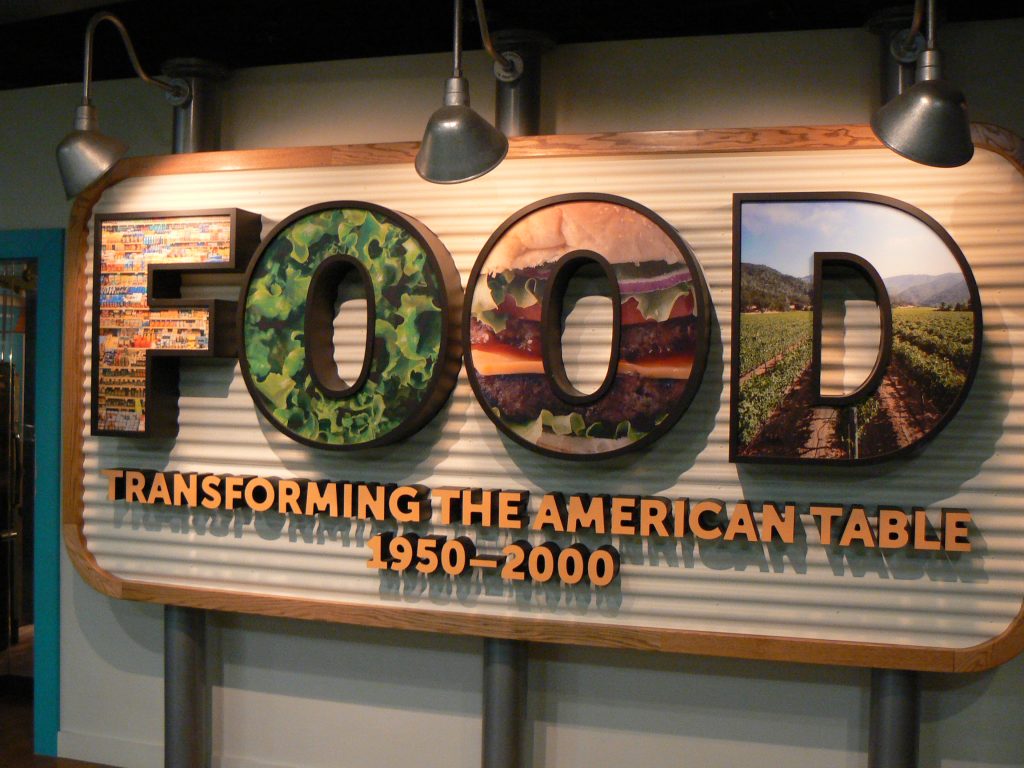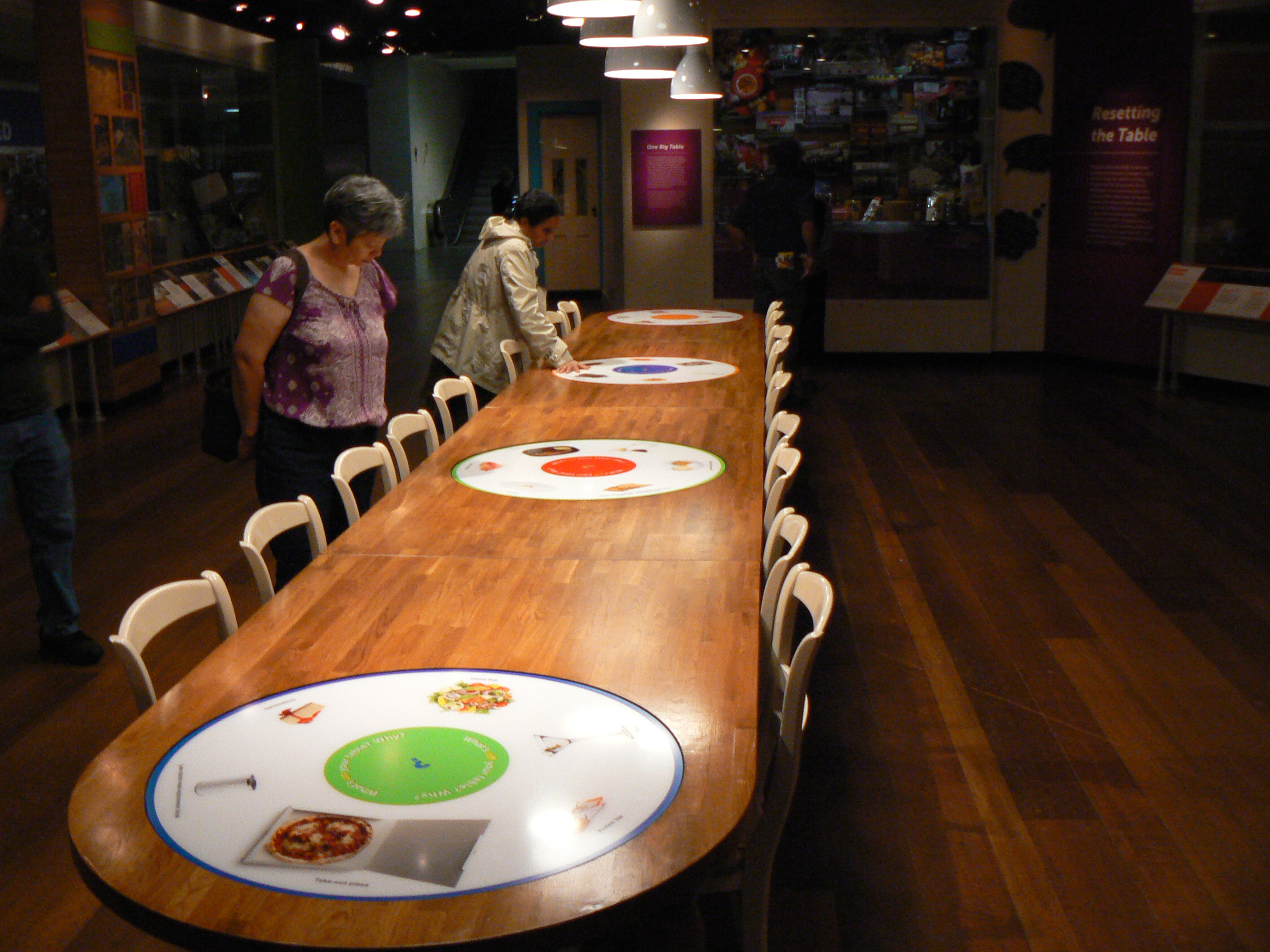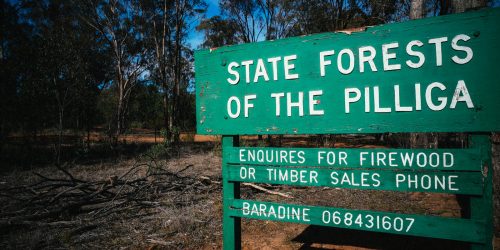Food: connections and resilience

‘Eating is an ecological act’, wise farmer and writer Wendell Berry famously wrote in his 1989 essay ‘The Pleasures of Eating’. Ecological thinking reveals connections, enacts relationships. At the National Museum of American History, one branch of the great Smithsonian Institution in Washington DC, a new exhibition titled ‘Food: transforming the American table 1950-2000’ contains a fascinating array of historical objects that enable understanding about the embeddedness of our bodies, through eating, in material and cultural patterns of exchange. ‘Beyond Agriculture: Australian food flows’ is one of four research areas within the People and the Environment program at the National Museum of Australia, so I was keen to see how the National Museum of American History had explored the topic of food.
The exhibition tells a sweeping story of the shifts in American food systems between 1950 and 2000. I was intrigued to discover that the farmers’ market movement, and its motivating philosophies about the value of localised consumption, had emerged decades earlier in the US than in Australia. Intimately familiar to an Australian child of the 1970s and 1980s were displays of portable metal tables for TV dinners, and Styrofoam ‘clam shell’ McDonalds hamburger containers.
I asked the exhibition’s curator, Paula Johnson, about her choice to explore the topic of food throughout the period 1950-2000. She explained that the popular highlight of the exhibition, the entire kitchen of legendary cook and teacher Julia Child, spanned these years, when dramatic changes to agriculture and eating habits had unfolded in America and throughout the industrialised world. So it was the kitchen itself, and the stories it held, that gave shape to the exhibition.

Stretching across the centre of the exhibition is a long dining table, lined with chairs. Visitors are encouraged to sit and talk, to discover connections between each other, the foods they eat, and the places where food is grown. The exhibition is forging other valuable connections. Smithsonian Gardens employs horticulturists with interests in history to create, manage and interpret a number of stunning gardens on Smithsonian sites. Throughout the summer just passed, the National Museum of American History collaborated with Smithsonian Gardens to run an innovative and popular series of public programs titled ‘Food in the Garden’. Held on shady lawns beside the bountiful Victory Garden, visitors enjoyed delicious foods and drinks, some made from vegetables and fruits grown onsite, while discussing the intertwining of bodies, food, places and time.

Joe Brunetti, lead horticulturist at Smithsonian Gardens, generously gave me a tour of the Victory Garden, as it began its slide into autumnal dormancy. He told me that since the recent relocation of the vegetable garden to a more visible and accessible site, its plants, beautiful design and shady spaces had attracted and engaged an entirely new set of museum visitors. Paula told a similar story about the ‘Food in the Garden’ public programs, which had established links between the Museum and previously disengaged sectors of the community. More than 30 food and farming experts participated this year, and they’re all keen to return as speakers at future garden and food events. And many will. Paula mentioned that a kitchen stage will soon be built inside the National Museum of American History. There, the Museum will present a wide range of programs relating to food history and culture. Food grown in the Victory Garden will be prepared and cooked, as participants discuss the histories and contemporary meanings of various food production, distribution and processing methods. And over the next four summers, the Museum will hold more public programs in collaboration with Smithsonian Gardens, fostering the sorts of connections we need.
As ecologists have long taught us, connections instil resilience. I’m visiting the United States to attend a workshop, ‘Collecting the Future: Museums, Communities and Climate Change’, at the American Museum of Natural History in New York. I’m looking forward to nutting out ways that cultural institutions from around the world might forge new connections between themselves and with our audiences, to enhance the capacities of museums to build community, and the resilience therein to cope with the physical, cultural and emotional challenges of climate change.



